One of the major complaints about mobile masts and cell towers is that they damage the local environment – that they simply look out of place and are in many cases plain ugly. In 2014 a survey in the US by the National Institute for Science, Law & Public Policy found that 94 per cent of people would be less likely to purchase a property that was near a cell tower, purely because towers and antennas are an eyesore and would negatively impact the property’s price.
Cell towers and antennas need to be in someone’s backyard otherwise there would be no mobile network. So what do you do? Disguise the cell tower.
A raft of companies has sprung up who think differently about the general aesthetic of antennas and towers.
Making antennas and cell towers that can blend in with existing urban or rural environments has become a skill. In Dubai for example, cell towers have now been disguised as palm trees, pretty convincingly in all honesty.
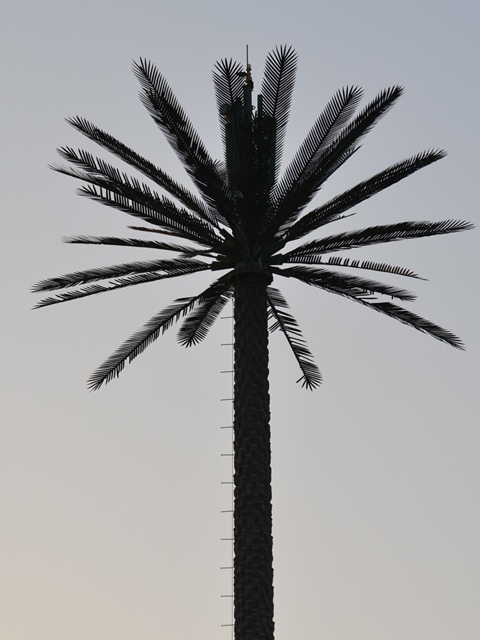
(Credit Fjellner.com)
Naturally as more and more cell sites become necessary due to the ever-increasing demand for bandwidth, more antennas and cell towers will be required as part of our modern landscape. A report from two years ago suggested that in the US, where the number of sites shrunk during market consolidation, new technology will drive a 3.9% CAGR until 2025.
So it makes sense to try to make them blend in with whatever environment they happen to be in. In the UK some suppliers have taken to disguising mobile masts as trees too, though rather than palm trees – which would look a little out of place in the average British countryside setting – they are camouflaging them with local varieties of foliage, as in the below photo taken in Blandford. Can you spot which one is the mobile antenna? (Clue: it’s the tallest one on the right).
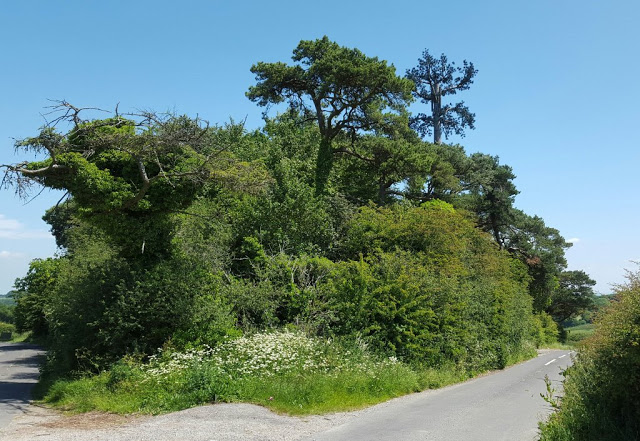
(Credit @960Sutton)
Different geography, different camouflage
But there is more going on that just tress when it comes to disguising antennas and masts. In the arid southern states of the US, where dark green forest canopies are rare, cell towers can be found disguised as various types of cactus.
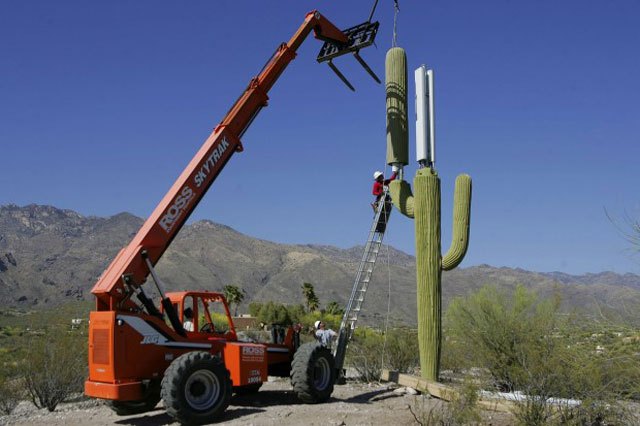
(Credit: Jaycrew on Reddit)
While over in Texas someone took a look around the state, remarked on the number of flags on view and recognized that a flagpole could also be adapted to make a nice inconspicuous home for a cell tower.
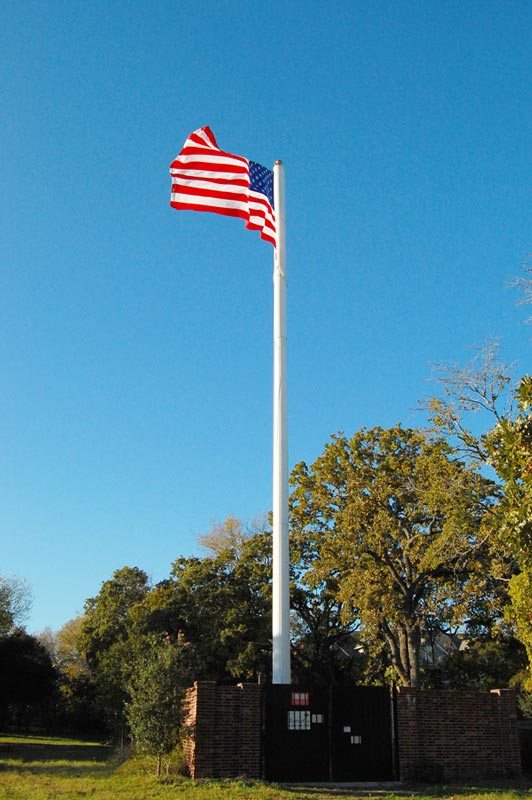
(Credit: AggiePhil04 @ Waymarking.com)
Another common sight in Texas are church and bell towers, again structures whose height and frequency throughout the state make smart and aesthetically-pleasing places to locate a cell phone tower.
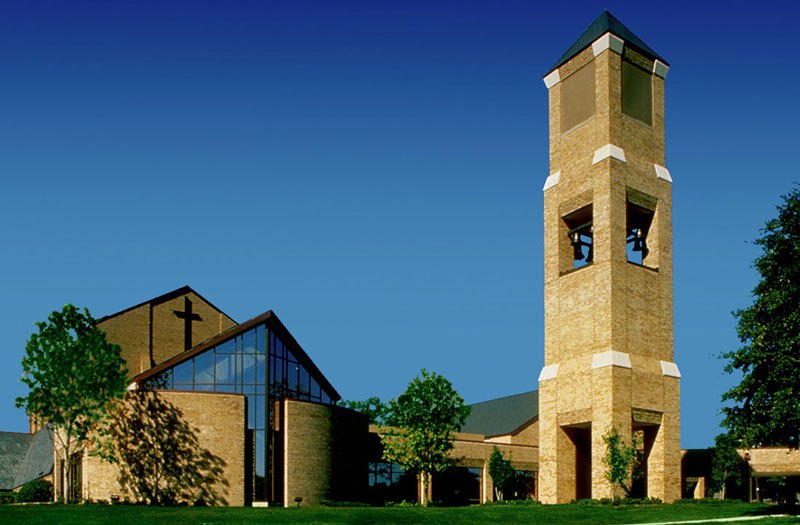
(Credit: JPBarry)
In essence if you have a tall, permanent structure, there is no real reason you cannot turn it into a cell tower or antenna display, as evidenced by one US supplier creating cell masts that can be hidden within water towers.
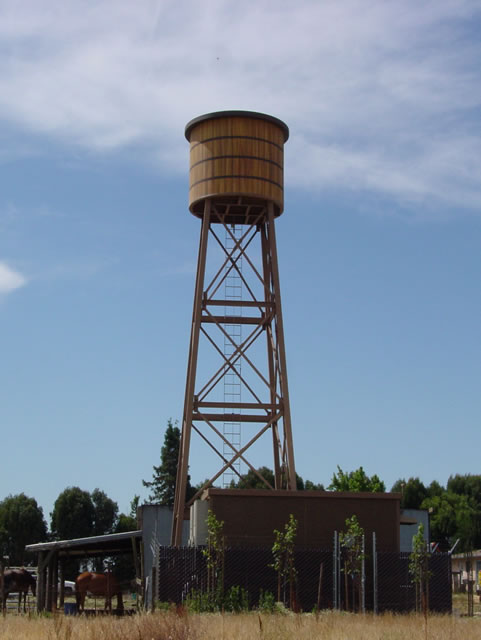
(Photo: Larson Camouflage)
That said, camouflaging cell towers and antennas is not limited to hiding them within existing tall structures. The use of basic camouflage is already taking place, as this example of an antenna covered over to match the brick exterior of its host building in Poland shows.
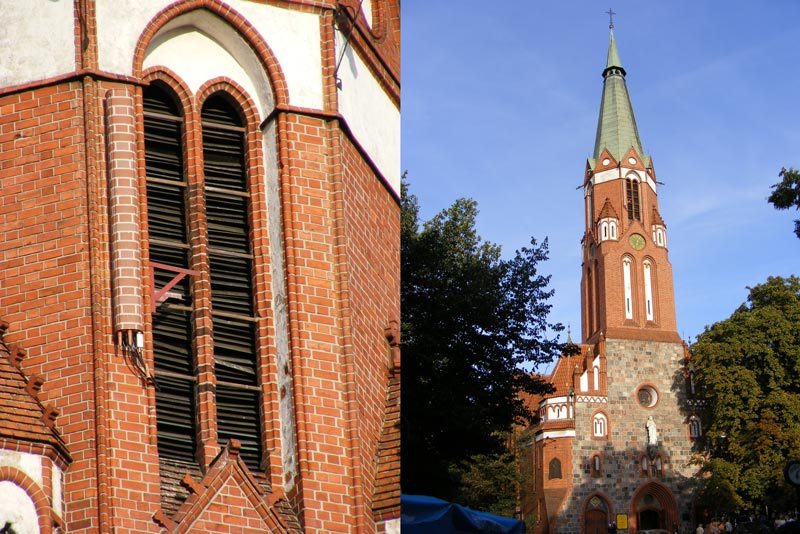
(Photo by Pplecke)
As telecoms service providers continue to work with municipalities over cell tower and antenna siting issues, the availability of disguised masts and antennas looks like a positive step in keeping urban and rural environments looking as attractive as possible. So it’s time to get imaginative – think camouflage, think about the landscape and think about hiding those antennas and towers wherever you can.

I’ve been writing about technology for around 15 years and today focus mainly on all things telecoms - next generation networks, mobile, cloud computing and plenty more. For Futurity Media I am based in the Asia-Pacific region and keep a close eye on all things tech happening in that exciting part of the world.